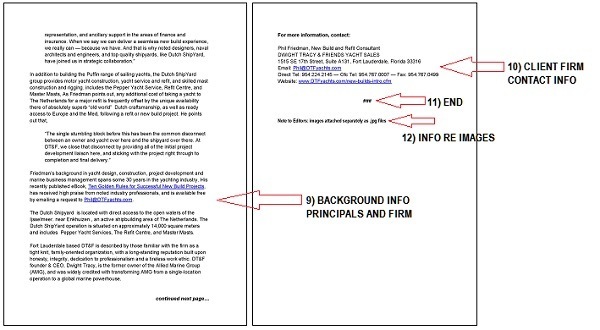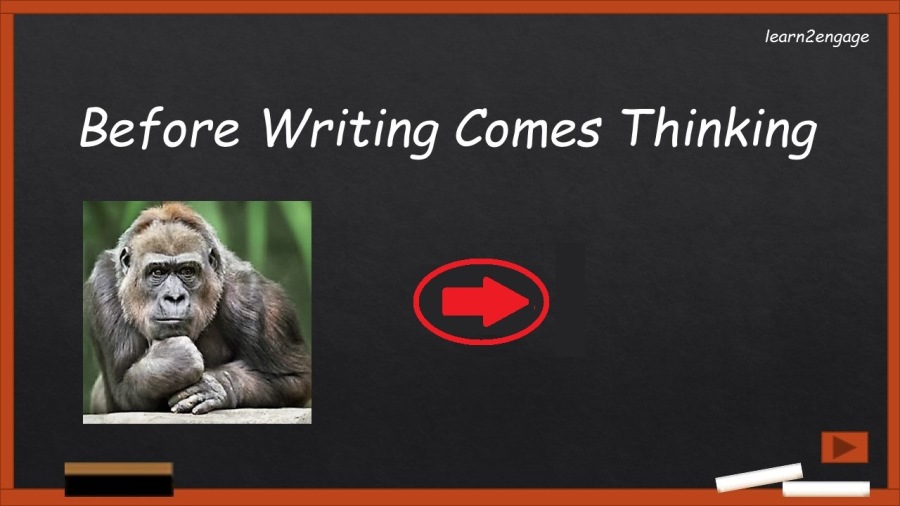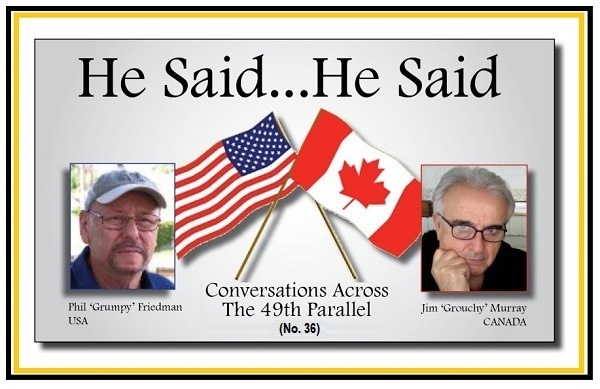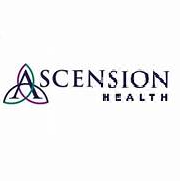Writing Effective Press Releases

CREATING EFFECTIVE PRESS RELEASES INVOLVES MORE THAN JUST USING THE RIGHT TEMPLATE ... HERE ARE SOME TIPS PLUS A PROVEN TEMPLATE TO BOOT...
Preface: This post was inspired by a recent exchange I had with April Lynn @AprilinProgress concerning a press release template she shared from wikiHow. I took exception to a couple of things about the template, based on my experience as a writer, magazine editor, and marketing and advertising account exec. April considered my comment negative and, in her words, trollish; and she challenged me — rightfully so — to put up or shut up. As a result, you will find below my recommendations and tips for writing press releases, as well as a suggested template. I hope you will find them useful.
I don't generally tell people how to write or write "better". For I believe strongly there is no single "best" way to write. And that everyone has to develop his or her own style and voice.
Even in the online "writing improvement" course which I run, Learn To Engage —With Confidence, the mantra is "before writing comes thinking". And we concentrate primarily on improving the way our students and clients organize their thoughts, ideas, and opinions. We also work on sharpening up their logic and reasoning skills. Because we've found that, when this is accomplished, writing improves naturally by leaps and bounds at the same time.
However, press releases are, by necessity, a well-defined form of writing, and their effectiveness benefits from adopting a regularized format and structure. Which is why I believe the following template and accompanying tips may prove useful to you, especially if you are new to writing, or at least relatively new to writing press releases.
Please understand that what is presented here is not in any way intended to be prescriptive, but only suggestive and a compilation of what I have found to be highly effective over the years in generating literally hundreds of successful press releases — where success is measured in terms of getting editors to pick up the contained information for appearance in their publications.
Generating an effective press release ultimately involves a lot more than simply using a good template... but let's start there...

1) The first item, right at the top of the release, should the media contact information. An editor may have a question that needs to be answered before the publication picks up the release, and you don't want to make that editor search through the release for whom to call. This media contact may or may not be the same contact to be listed for further information about the firm, product, service, event, happening or whatever for which you are seeking to generate publicity. But the media contact is the interface between a publication's editorial staff and the firm or client for whom the press release is being generated.
The media contact should always be included and displayed prominently because an editor will talk first to the media contact, should he or she be considering kicking the release up from a notice to a feature article — which is a home run in the public relations and marketing game.
2) The second item should be a release date, or if the release is not to be delayed, then a "For Immediate Release" notice.
I personally recommend always sending releases for immediate release, because delayed releases often end up in a pile and eventually overlooked when their release date finally arrives.
3) Then comes a title or headline. This needs to be carefully constructed to catch an editor's eye. Don't, however, expect it necessarily to be used in the publication, as editors like to headline pieces themselves.
4) The fourth item is a deck. The deck is one or more lines of text between the title and the body of the press release, which provide a brief summary of what follows. Editors with a background in print media love decks, and so do millennial digital editors when they are reading through releases, even if they don't use the deck when they pick up the release for publication. It never hurts, and usually helps to include a deck.
5) At the beginning of the lead paragraph, you should insert the date and location, newspaper style. This dates the information and imbues it with an aura of timeliness, which tends to motivate editors to look at it on a priority basis. For nobody wants to publish "old news".
6) The rest of the lead paragraph should be devoted to telling readers in two or a max three sentences what the entire release is about, as seen from a high level.
7) Quotes are always advantageous for adding "color" to the release and to imbue the contained information with some life. Readers, and consequently editors, tend to relate better to people than to cold factual statements, so you need to give them people to relate to.
8) At the bottom of each page, there needs to be a page-tracking device. I have found the best one to be a "continued" or "continued next page" phrase, which minimizes the chances that an editor will stop reading prematurely and possibly miss important information.

9) It's always beneficial to include a couple of paragraphs of background information on the organization being publicized and any principals mentioned or quoted in the release. This may not get picked up, but it helps provide an editor with a more detailed picture of what the release is all about.
10) The for-more-information contact may or may not be the same as the media contact, but it is, in any event, an important contact to have included in any published notice. If possible, it should be a contact who is best able to answer questions or deal with sales prospects and for those who may be seeking the additional detailed or technical information about the subject of the press release.
11) It is necessary to provide a firm indication of where the release ends. Many experienced writers like to use the old newspaper device of the triple hashtag, "###". But this is more nostalgic than required, and "The End" also does the job perfectly well.
12) Press releases have a much better chance of getting picked up if they are accompanied by good photography. The higher the resolution, the better, as that allows a publication's art director to downsize the images if necessary, but to use them in large format if they so choose. Product photos are always good, but the best photos for press release purposes have people in them as well.
It is best to include only one or two images with a release. If you have more that may be relevant, append a note that additional hi-res photography is available upon request. In this age of digital transmission, you can have additional images to an editor in the blink of an eye. But initially presenting too many photos just tends to increase the amount of time it takes an editor to preliminarily review the release, which decreases your chances of getting the release picked up.
If you've done your job well, the press release will get picked up in whole or part by more than one publication...

The press release shown as a specimen above is real, not made up for illustration. In the case at hand, it generated notices in more than six industry and related consumer publications. The material, as edited, varied from publication to publication, because most editors work differently and tend to vary in what they see as important. But when your press release racks up multiple publishing hits, you know you're doing something right.
That is why the ideal press release contains enough information to enable an editor to pick and choose what he or she wants to use, and how they want to spin the story. But not be so long as to appear daunting to read in a couple of minutes. For the latter will work against an editor spending the time to do so.
In my experience, the most effective press releases run from two to three pages maximum...
For what they are worth, here are some other tips based on hard-won experience:
A) Don't include a byline. This is a neophyte's mistake. A press release is not an article or a blog. It is not about the writer. It is about enticing an editor to pick up all or part of the information in the release for publication. If you include your byline, you will possibly confuse an editor as to whether you are submitting a press release or an article or a blog for publication. Resolving confusion takes time, which most editors don't have. Cause confusion, and your press release will be cast onto the discard pile or into the digital trash file.
As well, understand that when an editor picks up one of your press releases, he or she is doing you a good, and you are not going to be paid. (You should be getting paid by your client.) Including your byline in the release is going to confuse that issue as well.
B) Do understand editors are usually overworked and underpaid. But they are always looking for news and interesting information to fill their pages. So give your press release the best chance of being picked up by making the editor's job (and life) easier, rather than harder.
Make sure your release is well and tightly written, well organized, and capable of being copied and pasted, in whole or in part by the editor, into the publication he or she helps put together.
That is not to say an editor will simply copy and past your copy, but rather that your release needs to be good enough for him or her to do so if they so choose.
C) Do not submit the release to just a single publication. Indeed, do not hesitate to send the release to a number of different editors at the same publication. Just make sure you are sending it to editors who deal with the kind of information it represents. Very often, an assistant or associate editor will read and pick up a release, when the EIC or senior editors won't seriously consider it, or are too busy to do so.
When you submit an original article to an editor for consideration, the assumption is that you are not at the same time submitting it to other publications at the same time. But keep in mind that multiple simultaneous submissions are assumed in the case of press releases.
D) Do maintain an up-to-date list of appropriate media contacts. Do, as well undertake, within reason, one-on-one follow up with editors concerning press releases you are flogging. And understand that, if you are hiring a press release writer, these are values and benefits almost as important as the release itself.
What I've described to you here is not the only way to do press releases. Just one way that I've found successful over several decades of work as a writer and editor, for both print and digital media.
In that regards, some exceptionally valuable comments have been below by pros such as Wayne Yoshida and David Grinberg. I strongly recommend that you take the time to read what they have to say. — Phil Friedman
Author's notes: Your questions and comments are welcome, and will be answered if posted here. You can secure a full-size copy of the specimen template included above by emailing phil@learn2engage.org and writing "press release template" on the subject line.
If you found this post interesting and worthwhile and would like to receive notifications of my writings on a regular basis, click the [FOLLOW] button on my beBee profile. Better yet, elect there to follow my blog by email. As a writer-friend of mine says, you can always change your mind later.
Should you be curious about some of my other writing about writing, you can take a look at the following sampling of articles:
" Why I am NOT a "Writer" — And Other Random Observations on Literary Keyboarding"
"Hemingway May Have Advised to Write at a Third-Grade Level, but..."
"I'll Show You Mine, Then You Show Me Yours"
About me, Phil Friedman: With 30 some years background in the marine industry, I've worn numerous hats — as a yacht designer, boat builder, marine operations and business manager, marine industry consultant, marine marketing and communications specialist, yachting magazine writer and editor, yacht surveyor, and marine industry educator. I am also trained and experienced in interest-based negotiation and mediation.
In a previous life, I was formally trained as an academic philosopher and taught logic and philosophy at university.
Before writing comes thinking. ( The optional-to-read pitch) :
As a professional writer, editor, university educator, and speaker, with more than 1,000 print and digital publications, I've recently launched an online program for enhancing your expository writing: learn2engage — With Confidence. My mission is to help writers and would-be writers improve their thought and writing, master the logic of discussion, and strengthen their ability to deal with disagreement... which I have found to be the natural precursor to improved writing.

To schedule an appointment for a free 1/2-hour consult or to sit in on one of our online group sessions, email: info@learn2engage.org. I look forward to speaking with you soon.
![A
PH siogoets]
Em LEE] 2 huencer](https://contents.bebee.com/users/id/10277593/article/writing-effective-press-releases/abea68db.jpg)

Articles from Phil Friedman
View blog
TODAY'S POPULAR DISCUSSIONS ABOUT ARTIFICIAL INTELLIGENCE AND Ai ARE RIFE WITH SCIENCE FANTASY AND L ...

THE UPDATED AND EXPANDED SECOND EDITION OF THIS WELL-RECEIVED E-BOOK IS NOW AVAILABLE... · More than ...

GRUMPY AND GROUCHY TAKE A CRITICAL LOOK AT THE HONEY FACTORY... · Preface: · When Jim Murray and I f ...
Related professionals
You may be interested in these jobs
-

Business Development Manager
Found in: Lensa US 13 C2 - 1 hour ago
LandDesign Alexandria, United StatesLandDesign is a collection of visionaries and problem solvers who believe in the power of balance, combining creativity and practicality to design what we know will thrive. We leverage our diverse expertise and relentless curiosity to deliver innovative, attainable big ideas - al ...
-
Packers- Charlotte
Found in: Lensa US 13 C2 - 1 hour ago
Solucion LLC Charlotte, United StatesJoin a great team as a packer You'll be responsible for the production or packaging of a variety of manufactured products. This position is a support role for several areas of the manufacturing process, including but not limited to packing, assembly, inspection, labeling. Candida ...
-

New CNAs
Found in: Talent US 2A C2 - 6 days ago
Ascension Lakeside, United States Full time, Part timeAscension has provided thousands of associates and caregivers a rewarding career in healthcare since 1902. We strive to expand access to high-quality, low-cost, person-centered care and services for all. At St. Vincent's Cardiology - Clay County, caregivers can find both a jumpst ...


Comments
Phil Friedman
7 years ago #45
Thank you Erroll-El-Warner, for reading and for the very kind words. My best to you.
Phil Friedman
7 years ago #44
Thank you, Donna-Luisa, for reading and commenting. And for the kind words. Cheers!
Phil Friedman
7 years ago #43
Challenge is good, April, as is getting out of one's comfort zone. Thank you for your contribution, and for being a good sport. Cheers!
Phil Friedman
7 years ago #42
thank you, April, for sharing this post and for the kind words. Not to mention for being a good sport. My best to you. Cheers!
Phil Friedman
7 years ago #41
Aurorasa, the suggestions I've received for engaging in space travel were more on the order of, "Why don't you take a flying f#@k at the moon,,," and some variants on that theme. And although she didn't come out and say it in her recent comment addressed to me on one of your posts, I think April Lynn was thinking something of that sort. Cheers!
Phil Friedman
7 years ago #40
Yes, Aurorasa, wanna trade? I give you tips on low-cost distribution, and you give me tips on not being a negative troll? Oh wait, I've already received several tips on taking a trip to the moon and engaging in some strenuous physical exercises that seem to me to be anatomically impossible. Cheers!
Phil Friedman
7 years ago #39
Thank you, Mohammed, for reading and sharing this piece. And for the kind words. My best to you.
Mohammed Abdul Jawad
7 years ago #38
Wayne Yoshida
7 years ago #37
Haha. That gets a relevant boink
Jim Murray
7 years ago #36
Sure. My pace of life is going to be a lot slower in '17. Less travel time to just about everywhere. We could call it the Beezers Guilde to Writing Gooder Stuff.
Phil Friedman
7 years ago #35
No, Wayne, that is not poetic license, that is poetic massacre. If you're interested in contributing a chapter, I assure you that title will be for one of Jim's chapters. Not for the eBook. Cheers! :-)
Jim Murray
7 years ago #34
Sure. My pace of life is going to be a lot slower in '17. Less travel time to just about everywhere.
Wayne Yoshida
7 years ago #33
Count me in!
Wayne Yoshida
7 years ago #32
Ah ha! Looks like you got me there. I never played with typesetting equipment, but reported to a boss who was of that vintage. She made me change my spaces after the period habit for one space. So, I am of the desktop publishing (digital) vintage. . . . Remember the original Mac and Mac Plus and PageMaker?
Wayne Yoshida
7 years ago #31
Gooder Stuff -- excellent. We're writing professionals -- that's poetic licence.
Phil Friedman
7 years ago #30
Thank you, Aurorasa, for reading and commenting. Negative or not, troll that I am or not, I am always pleased to be of service. Cheers and best wishes for a happy Thanksgiving Day.
Phil Friedman
7 years ago #29
Thanks, Don, for joining the conversation. You are correct that not much has changed in 40 years when it comes to media releases. Except maybe that it's easier and quicker to distribute them. The expected form is well defined. And the key is to present something that helps make an editor's job easier and does not represent still another challenge to conquer. Of course, template or not, and tips notwithstanding, you still have to present a compelling story. But if a new writer thinks he or she can simply shoot out free-form "creative" stuff as media releases, they are badly mistaken. BTW, cherish the trips down memory lane, for too soon the road is washed away. (From The Wisdom of Chung King, circa 650 AD).
Phil Friedman
7 years ago #28
Good idea, Jim. Although with the number of pros here in the beBee writer's community, I suggest that you and I co-edit an eBook on writing, with not only our own contributions but with chapters by guys like Don Kerr, if we can get them to participate. I'm thinking a dozen to fifteen chapters, and that beBee might be interested in promoting it as part of a new eBook publishing arm. What do you think?
Phil Friedman
7 years ago #27
Thanks Wayne, both for the suggestions and the support. For the record, one of my first jobs was handsetting type using a pica stick and a loose lead type for North American Insurance. Printed agent business cards and policies in-house on an old ink-platen printer. The guy I worked for nearly had a nervous breakdown when the company introduced an offset plate printing machine, trained me how to do it, and we increased our production from 1,000 copies per hour to 10,000 copies per hour. (I would have cranked it up to 20,000 per hour, but my boss then would really have gone beserk.) Cheers!
Phil Friedman
7 years ago #26
Pascal, I agree. Once you have the bun and the condiments applied to it, you have to put in the meat... or the sandwich fails to satisfy. And no amount of ketchup, relish, chopped onions, and pickles makes up for not having a tasty burger inside the bun. Hmmm... the danger of using a metaphor like this is I'm now feeling hungry. Thank you, as always, for adding your keen insight to the conversation. And cheers! (Going out now for a charbroiled burger. All you Vegans can just piss off! Just kidding :-)
Phil Friedman
7 years ago #25
Thank you, Arnab, for reading and commenting. I agree that nobody knows everything about anything. And that includes writing. There is no doubt that press releases in "free form" get picked up at times, if the story they tell is sufficiently compelling. But when there are established expectations among media editors as to the form in which something gets submitted, the best chance one has to be successful is to follow a commonly recognized form. Writing and distributing press releases has a well defined and limited set of objectives. Keeping those objectives in minds is important. Cheers!
Phil Friedman
7 years ago #24
Thank you, Milos, for reading and commenting. Yes, being a peer reviewer can lead to some "interesting" situations, as can being an editor... although those situations will be different. One thing is certain: it's always difficult when you are called upon to exercise judgment, rather than simply express your personal reactions. I look forward to reading your stories. Cheers!
Wayne Yoshida
7 years ago #23
Don brings up a great point -- make is as easy as possible [plug and play] for the editor to work with your stuff. I had to fill in for an editor at the magazine I write for, and I was amazed at how much - crap - was submitted, and required very heavy editing/fixing. Good lesson for me, since the boss mentioned something about my submissions never needed much editing. Probably the only compliment I received from that guy . . .
don kerr
7 years ago #22
Wayne Yoshida
7 years ago #21
#13 Phil -- 1) - I am glad you noticed that, so maybe we are the same vintage :-o I wondered if anyone would recognize that. Here's another typesetter habit -- use of single space after period instead of two. BTW, for job applicants, some scanners (for applicant tracking systems, ATS) detect the use of one or two spaces after periods. This habit can gauge your age because 2 spaces = learned on a typewriter (old fashioned printer). Oddly, this time being older makes a difference in a good way. 4) Yes, over time, the "marcom guy" should / must cultivate relationships with editors in your space. I have / had this from the past industries I've worked in, and it is truly great when editors come to you for material to publish. These opportunities usually come about because some other contributor dropped the ball - and if you are able to rescue them - you are the hero. Never turn those opportunities down - even when deadlines seem impossible. Because you helped the editor - you will be remembered as a "go to" person to help out. Good point on the photo thing. Probably depends on the editors you are working with. At some point you get to know each other (as above) and quite often things click into place. YES, please feel free to add my comments into your piece. Glad to offer practical advice.
Jim Murray
7 years ago #20
Pascal Derrien
7 years ago #19
Phil Friedman
7 years ago #18
thank you, John, for reading and sharing. Always gratified by your support. Cheers and best wishes for turkey dat.
Milos Djukic
7 years ago #17
Phil Friedman
7 years ago #16
Phil Friedman
7 years ago #15
David, thanks for reading and commenting. And for the kind words. You are correct, I think, that a press release can often be a way of generating a contact with an editor over a story. Perhaps, that perspective displays the heart of a Public Relations guy, as opposed to an introvert writer. Or not. I am so pleased to be drawing real pros like you and Wayne into a discussion in which the comments are as important and substantive as the piece itself. Cheers!.
Phil Friedman
7 years ago #14
Kev, those are very kind words... although I have to think that while some of us may leak brilliance, others of us (including me) tend to dribble drivel. Either way, I am pleased that this piece is not being seen as negative. Cheers!
Phil Friedman
7 years ago #13
Wayne, I agree in general, although in some cases I've found two photos work if there is a possibility of different potential spins to the piece you're hoping to cultivate. I understand you link to a photo bank, but in the areas I've worked in, it's always proved advantageous to have an editor call or email for additional photography, because at times it's provided a segue to soft-pitching a feature story. Cheers!
Phil Friedman
7 years ago #12
Wayne, my hope was to entice other pros such as you into commenting and adding their own tips and advice. Which you have done... admirably. Thank you... seriously. Here are some points: 1) Your use of the old typesetter's " --30--" to indicate end tells me you're probably older than I am. :-) 2.) I agree with you on News Release vs Press Release ... if you use one of those titles at the top of the release, which I never do, precisely because each editor has his or her own prejudice about those two terms. So I prefer to let them see the document in whatever light they wish. 3) You and I agree re "embargo" -- which I have always called a "delayed or scheduled release". One of my reasons is that it removes the aura that you are presenting "hot" news and that competing outlets will be carrying it almost immediately. 4) I agree that one should not pester an editor. But one should cultivate the sort of relationships that enable one to call once in a while on a "big" deal just to say hello and see if there is anything else one can supply. It's probably a matter of the writer stepping over into the realm of public relations. Your other points are all valid as well, and I hope that everyone who reads this piece will also read you comment. In fact, if you don't mind, I will add a note to that effect in the body of the piece, if that's okay with you.
Phil Friedman
7 years ago #11
Well, Randy, one man's tips are another man's quips... or some such. I guess. Thanks for reading and commenting. Cheers!
David B. Grinberg
7 years ago #10
Kevin Pashuk
7 years ago #9
Wayne Yoshida
7 years ago #8
Wayne Yoshida
7 years ago #7
Phil Friedman
7 years ago #6
Better than being a Terminator. Cheers!
Jim Murray
7 years ago #5
Does this make me an innovator?
John White, MBA
7 years ago #4
Randy Keho
7 years ago #3
Phil Friedman
7 years ago #2
Phil Friedman
7 years ago #1